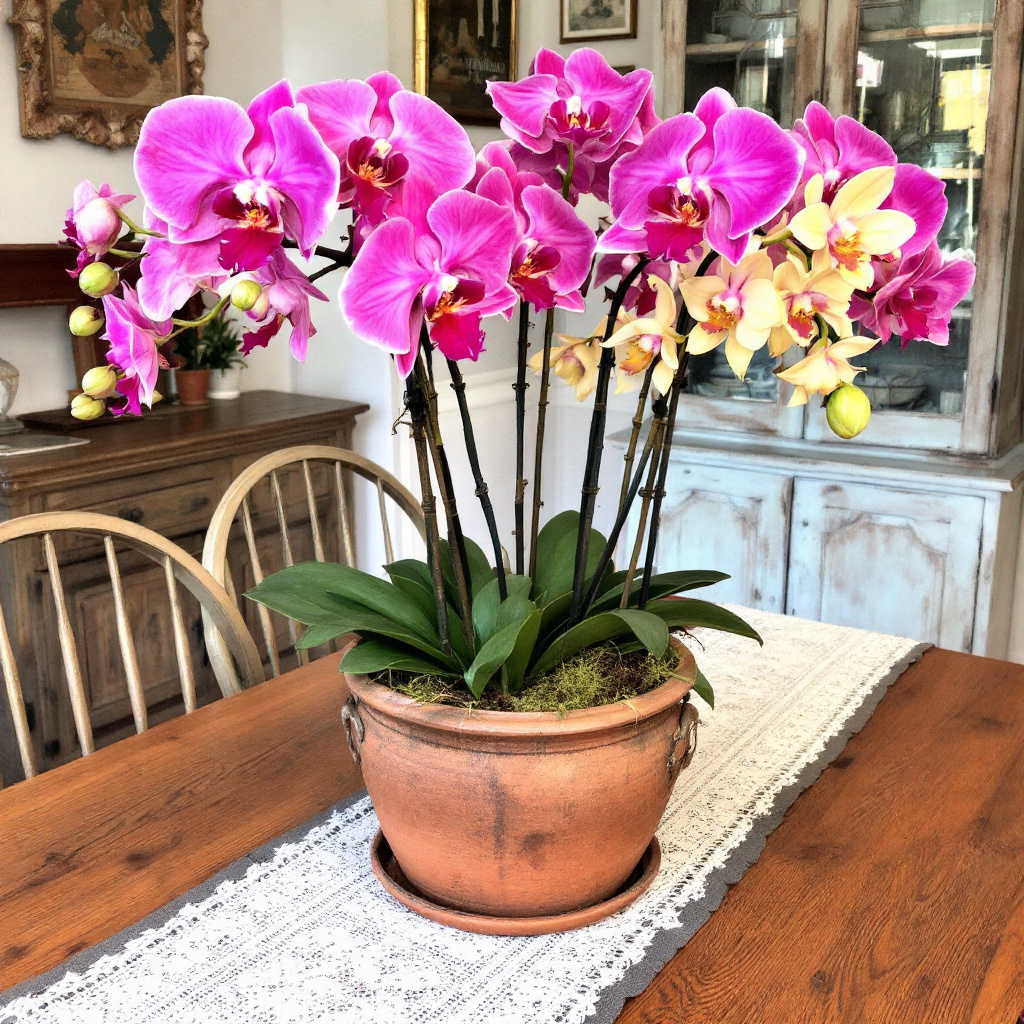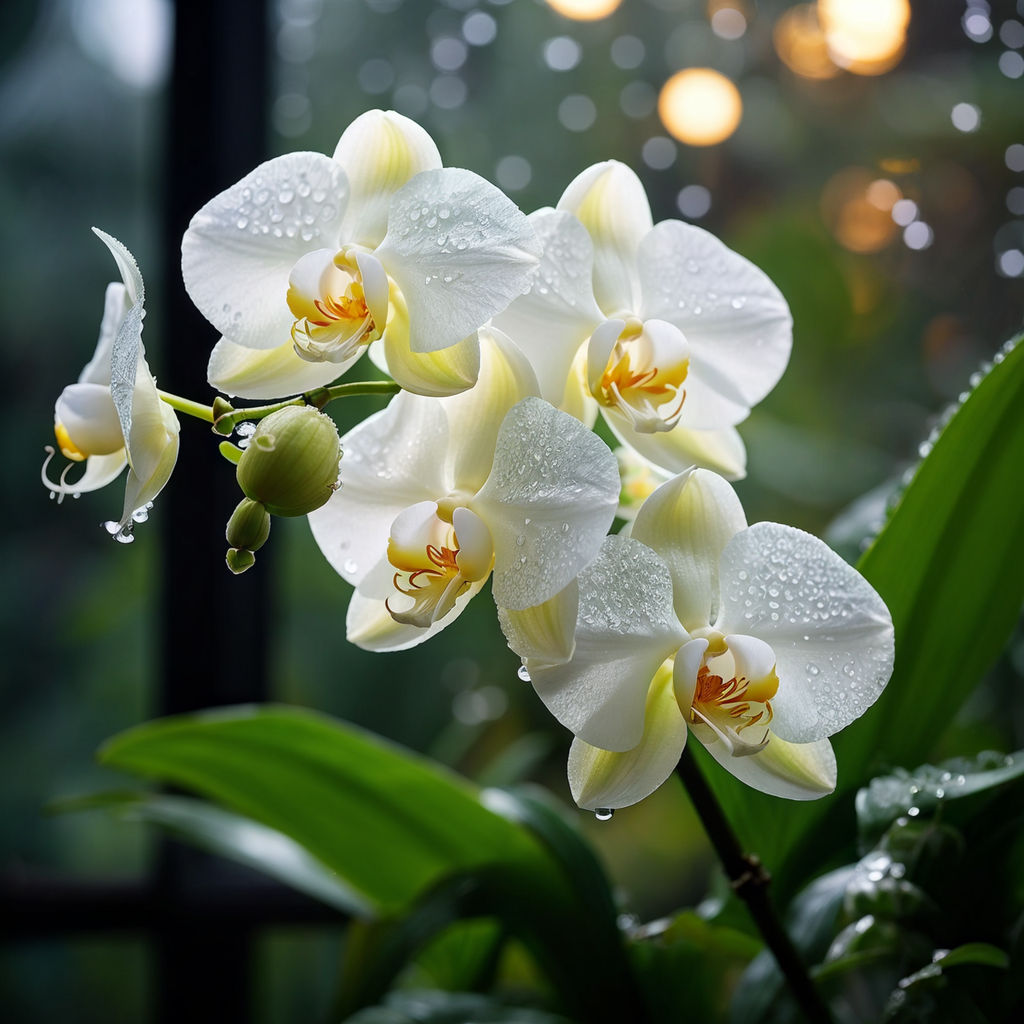
Orchids in Florida represent one of the most diverse families of flowering plants, comprising over 28,000 recognized species. This staggering variety places them among the largest plant families in the world. The adaptability of orchids is remarkable, enabling them to thrive in various environments, from tropical rainforests to arid deserts. This diversity is not only evident in their number but also in their many shapes, sizes, and colors. Each species exhibits unique characteristics that reflect its habitat and ecological niche.
The morphological variations of orchids are striking. For instance, the Phalaenopsis, commonly known as the moth orchid, features broad, flat flowers that can be found in shades of white, pink, and purple. In contrast, the Paphiopedilum, or lady’s slipper orchid, captures attention with its distinctive pouch-like bloom. This variety in floral structure serves specific pollination strategies, adapting to attract particular pollinators, such as bees and butterflies. Other species, like the Dendrobium and Cattleya, possess elongated stems and vibrant flowers, showcasing an even wider array of colors and patterns.
Moreover, orchids are found across all continents, except Antarctica, exhibiting a global distribution that reflects diverse climatic conditions. Tropical regions house a vast number of orchid species, characterized by lush foliage and complex ecosystems. However, orchids also adapt to cooler climates, with unique species emerging in temperate environments, demonstrating their incredible resilience. An example is the Cypripedium, or northern lady’s slipper, which thrives in temperate forests. This ability to flourish in varied habitats contributes to the rich tapestry of orchid diversity, captivating researchers and enthusiasts alike.
Orchids in Different Climates and Habitats
Orchids are renowned for their remarkable adaptability, allowing them to thrive in a diverse range of climates and habitats. Predominantly, orchids are found in tropical rainforests, where the consistent warm temperature and high humidity create an ideal environment for many species. In these lush ecosystems, orchids grow as epiphytes, utilizing trees for support while absorbing moisture and nutrients from the air, rain, and debris. This unique growth form allows them to access sunlight that might otherwise be blocked by dense foliage.

However, orchids are not confined to tropical settings. They can also be found in temperate regions, particularly those that experience distinct seasonal changes. In these areas, hardy orchids have adapted to endure fluctuations in temperature and humidity. For example, species such as the lady’s slipper and the bog orchid flourish in meadows and wetlands, showcasing their ability to cope with cooler conditions and variable moisture levels.
Furthermore, Australia is home to some of the most unusual orchid species, with certain types blooming underground, such as the bonnet orchid. These unique adaptations highlight the extraordinary resilience of orchids, as they navigate the challenges of both arid and moist environments. Environmental factors such as light, temperature, and even the presence of pollinators play a significant role in determining the growth and flowering cycles of orchids. The intricate relationships between these flowers and their surroundings are essential for their survival, emphasizing their ecological importance.

Despite their ability to thrive in diverse habitats, orchids also face numerous challenges due to habitat destruction, climate change, and invasive species. As they adapt to their environment, conservation efforts are crucial to ensure the survival of these fascinating plants across their various natural settings.
Cultural Significance and Uses of Orchids
Orchids hold a prominent place in various cultures, often revered for their elegance and exotic beauty. Across the globe, these flowers symbolize a multitude of concepts, including love, beauty, and strength. In many Asian cultures, for example, orchids are associated with fertility and refinement. The intricate patterns and diverse colors found in various orchid species contribute to their symbolic richness, making them a popular choice for gifts and ceremonial decorations during significant life events such as weddings and anniversaries.
Beyond their aesthetic appeal, orchids have a storied history in traditional medicine. Various cultures have utilized parts of these flowers for their medicinal properties. For instance, specific orchid extracts are believed to have anti-inflammatory and antioxidant effects. In traditional Chinese medicine, certain species are valued for their ability to enhance vitality and support respiratory health. This diverse use in holistic practices further highlights the multifaceted role orchids play in cultural traditions.

The ornamental value of orchids is perhaps their most recognized attribute, having established a significant presence in horticulture. These flowers are highly sought after for their unique shapes and colors, resulting in a booming trade in orchid cultivation. In many regions, such as Southeast Asia, the economic importance of orchids extends to festivals and exhibitions, where growers display their prized specimens, promoting local tourism and community pride. Various cultures celebrate orchids through specific festivals, showcasing them as symbols of companionship and prosperity. Overall, the cultural significance of orchids extends far beyond their visual allure, impacting social traditions, economic frameworks, and health practices across the globe.
Conservation and Preservation of Orchids
Orchids, renowned for their intricate beauty and diversity, are facing significant conservation challenges. Habitat loss, primarily due to urbanization and agricultural expansion, poses a serious risk to various orchid species. As forests are cleared and wetlands drained, the natural environments where these delicate flowers thrive diminish, leading to decreased populations and biodiversity. Moreover, climate change further exacerbates these issues, altering the delicate ecosystems that orchids depend on, which can affect their flowering cycles and reproductive success.
Another pressing concern is the illegal trade of orchids, which often targets rare and endangered species. This illicit activity not only jeopardizes specific populations but also disrupts the balance of ecosystems where these plants flourish. International efforts to combat this trade include stricter regulations and increased enforcement through organizations such as CITES (the Convention on International Trade in Endangered Species of Wild Fauna and Flora).

Fortunately, there are numerous initiatives aimed at conserving and preserving orchid species. Botanical gardens play a vital role in safeguarding genetic diversity by maintaining living collections of orchids, conducting research, and participating in breeding programs. Many of these facilities also focus on public education, raising awareness about the importance of orchid conservation and the threats they face.
Seed banks are another effective conservation strategy, preserving the genetic material of orchids for future restoration efforts. These repositories work to ensure that the unique traits of various species are not lost, allowing for potential reintroduction into their natural habitats. Furthermore, community-based programs engage local populations in conservation efforts, fostering a strong sense of responsibility and stewardship towards local orchid species.
Individuals and organizations interested in supporting orchid conservation can contribute in numerous ways. Engaging in responsible horticulture, spreading awareness in their communities, and participating in conservation projects are vital steps toward preserving these remarkable plants for future generations.